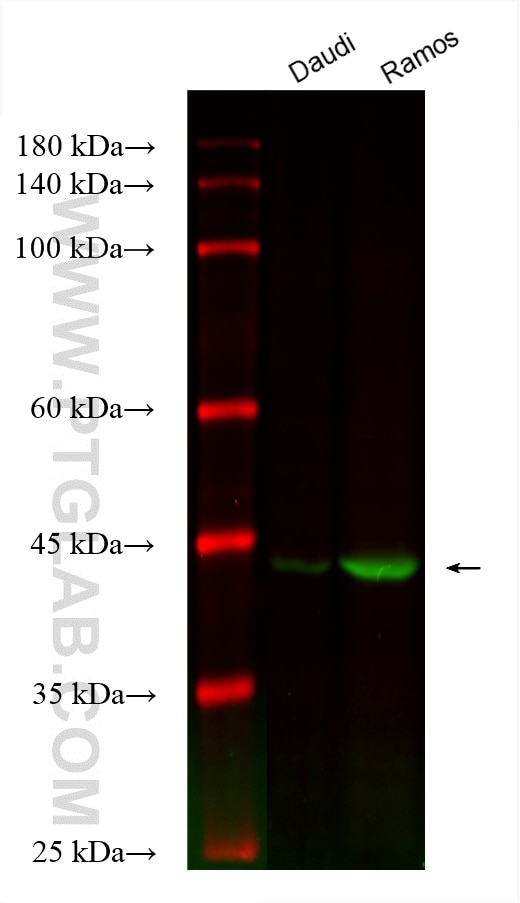Tested Applications
| Positive WB detected in | Daudi cells |
Recommended dilution
| Application | Dilution |
|---|---|
| Western Blot (WB) | WB : 1:2000-1:16000 |
| It is recommended that this reagent should be titrated in each testing system to obtain optimal results. | |
| Sample-dependent, Check data in validation data gallery. | |
Product Information
CL488-67084 targets BCAT1 in WB applications and shows reactivity with human, pig samples.
| Tested Reactivity | human, pig |
| Host / Isotype | Mouse / IgG1 |
| Class | Monoclonal |
| Type | Antibody |
| Immunogen | BCAT1 fusion protein Ag28328 Predict reactive species |
| Full Name | branched chain aminotransferase 1, cytosolic |
| Calculated Molecular Weight | 320 aa, 36 kDa |
| Observed Molecular Weight | 42-45 kDa |
| GenBank Accession Number | BC033864 |
| Gene Symbol | BCAT1 |
| Gene ID (NCBI) | 586 |
| Conjugate | CoraLite® Plus 488 Fluorescent Dye |
| Excitation/Emission Maxima Wavelengths | 493 nm / 522 nm |
| Form | Liquid |
| Purification Method | Protein G purification |
| UNIPROT ID | P54687 |
| Storage Buffer | PBS with 50% Glycerol, 0.05% Proclin300, 0.5% BSA, pH 7.3. |
| Storage Conditions | Store at -20°C. Avoid exposure to light. Stable for one year after shipment. Aliquoting is unnecessary for -20oC storage. |
Background Information
BCAT1, also named as branched-chain amino acid trasaminase1, is a cytosolic enzyme responsible for the reversible transamination of leucine, isoleucine and valine that catalyzes the transformation of branched-chain L-amino acids (BCAA) into branched-chain a-ketoacids (BCKA), thereby providing macromolecule precursors. It has been reported that BCAT1 is associated with tumor growth and disease progression (PMID:29255149).
Protocols
| Product Specific Protocols | |
|---|---|
| WB protocol for CL Plus 488 BCAT1 antibody CL488-67084 | Download protocol |
| Standard Protocols | |
|---|---|
| Click here to view our Standard Protocols |



